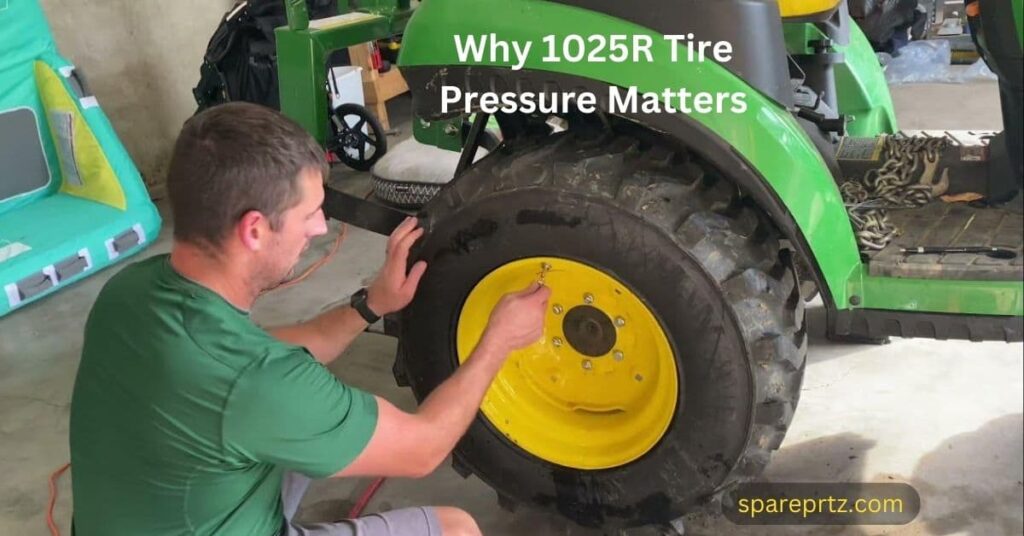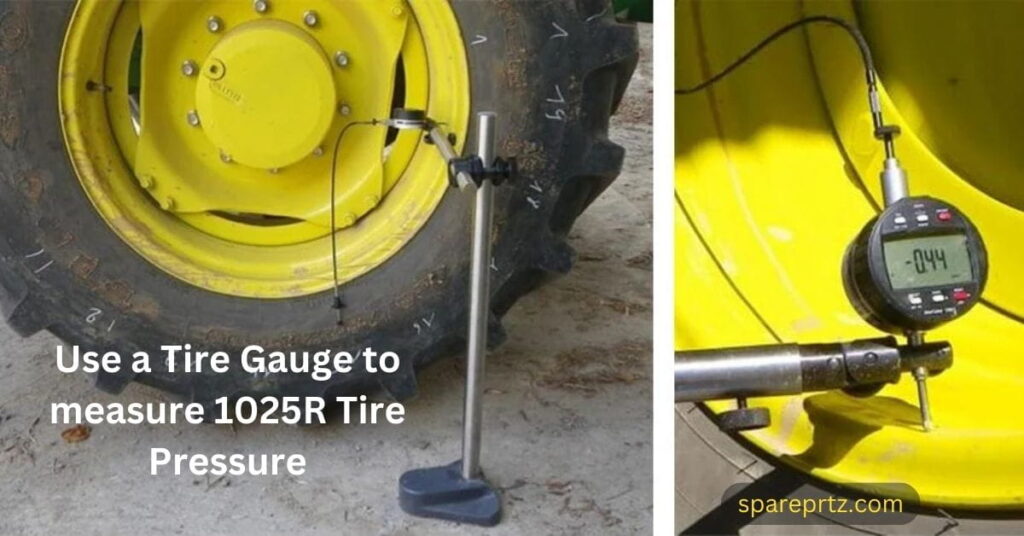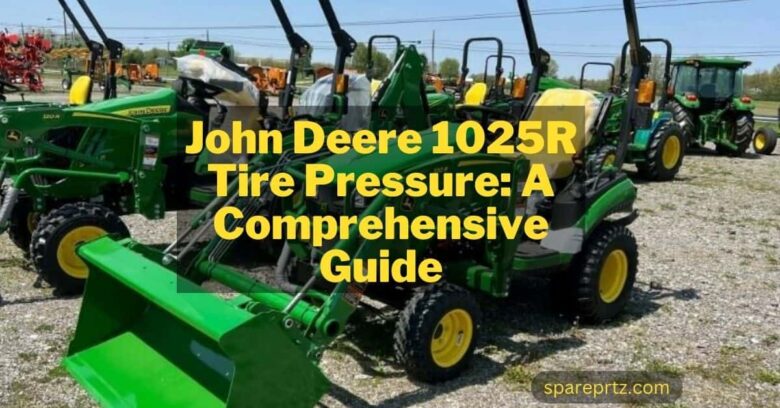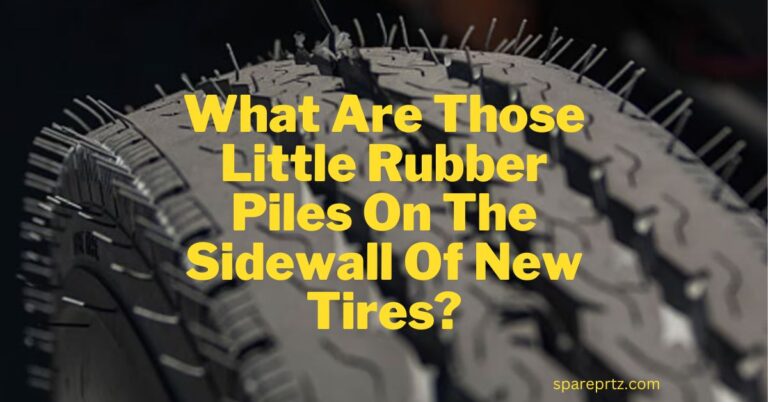John Deere 1025R Tire Pressure: A Comprehensive Guide
Tire pressure may not be the most exciting topic, but when it comes to your John Deere 1025R, it’s crucial to understand why it matters. Proper tire pressure is not only important for your tractor’s performance but also for your safety.
In this article, we’ll explain the significance of maintaining the right tire pressure for your John Deere 1025R, using simple language that anyone can understand.
Why 1025R Tire Pressure Matters:
1. Safety First:
Your safety is paramount when operating your John Deere 1025R. Proper tire pressure ensures a stable and controlled ride. Underinflated tires can compromise stability, while overinflated tires lead to reduced traction. Neither scenario is safe. The right tire pressure guarantees that you can safely use your tractor.

2. Improved Performance:
The proper tire pressure is essential for top-notch tractor performance. It directly affects traction, which is crucial for tasks like mowing, plowing, and hauling. The correct pressure will make your tractor handle smoothly, making your work more efficient.
3. Fuel Efficiency:
You might not expect it, but tire pressure influences fuel efficiency. Underinflated tires create more rolling resistance, forcing your engine to work harder and consume more fuel. Maintaining the right pressure can save you money on fuel in the long run.
Specific 1025R Tire Pressure Recommendations:
The recommended tire pressure for your John Deere 1025R varies based on the type of tires and the load you’re carrying. Here are some specific tire pressure recommendations for different types of John Deere 1025R tires:
- Versa Turf Tires: 12 psi for the front tires and 18 psi for the rear tires.
- R4 Tires: 12 psi for the front tires and 20 psi for the rear tires.
- R1 Tires: 15 psi for the front tires and 25 psi for the rear tires.
These are solid starting points. However, it’s essential to know that you may need to adjust the tire pressure based on specific conditions:
- Soft Terrain: When working in mud or snow, consider lowering the tire pressure by 2-3 psi to enhance traction.
- Heavy Loads: For heavy implements, increasing the tire pressure by 2-3 psi provides extra support.
- High-Speed Driving: When transporting your tractor on a trailer, a 2-3 psi increase in tire pressure can improve stability and handling.
How to Check Your 1025R Tire Pressure:
Knowing how to check and adjust your tire pressure is vital. Here’s a simple guide:
1. Use a Tire Gauge:
To check your tire pressure, you’ll need a tire gauge, which can be purchased at an automotive store or online. These are generally affordable and easy to use.
- Remove the valve cap from the tire.
- Press the gauge onto the valve stem.
- The gauge will display the current pressure in PSI (pounds per square inch).
- Compare this reading to the recommended tire pressure in your tractor’s manual.

2. Find the Recommended 1025R Tire Pressure:
The recommended tire pressure for your John Deere 1025R can usually be found in the owner’s manual or on a sticker located near the tractor’s operator station.
For ease, I have also mentioned the recommended 1025R tire pressure list in the above discussion. Always follow the manufacturer’s recommendations specific to your tractor model.
3. Adjust the Pressure:
If your tire pressure is too low, you can add air at a gas station or with a portable air compressor. If it’s too high, you can release some air using the gauge or the valve stem cap. Recheck the pressure after adjustments to ensure it’s within the recommended range.
Precautionary Measures to Prevent High Damage from 1025R Tire Pressure Issues:
Regular Maintenance:
Remember, tire pressure is not a one-and-done task. Regularly check your tire pressure, especially before starting important tasks. Seasonal temperature changes can also affect tire pressure.
Avoid Overloading:
Overloading your tractor can place excessive stress on the tires and increase the blowout risk. Always follow the manufacturer’s weight recommendations and exercise caution. Some general recommendations are given here.
The John Deere 1025R can lift up to 836 pounds with its loader when it’s fully extended to a height of 72 inches at the pin. It can also lift 681 pounds with its three-point hitch when the load is 24 inches away from the pin.
Storage Considerations:
Store your tractor in a cool, dry place. Extreme temperatures can damage the tires and cause them to lose pressure. Proper storage helps maintain tire integrity.
Conclusion:
In conclusion, maintaining the correct tire pressure for your John Deere 1025R tractor is a straightforward yet crucial aspect of ensuring safety and efficient operation. It not only ensures your safety but also optimizes your tractor’s performance and can save you money on fuel.
By following the steps for checking and adjusting your tire pressure, considering specific conditions, and understanding the tire types, you can ensure that your tractor runs smoothly and that you enjoy a safe and productive experience on your farm or property.
Don’t underestimate the importance of tire pressure – it’s a small task that can significantly impact your tractor’s performance and overall satisfaction. If you have any questions or need further guidance, consult your owner’s manual or contact a John Deere dealer.







